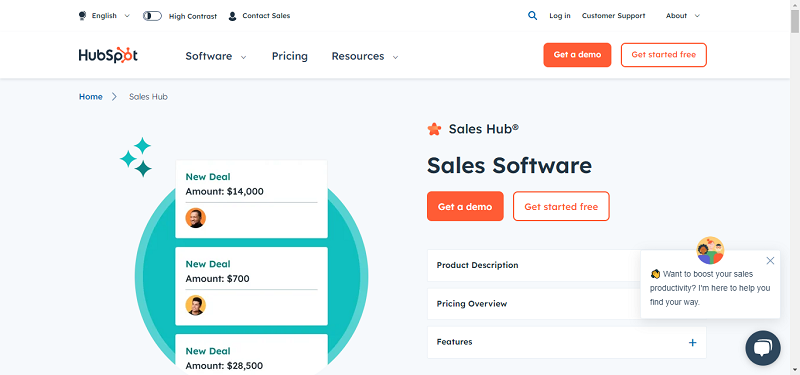Automation can help your company save time by freeing up the schedules of workers who regularly engage in repetitive tasks at while on the clock. Such technology can also streamline workflows by cutting out unnecessary steps.
But, like anything else, choosing to implement automation can come with challenges. Here are six of the most common struggles, plus how to conquer them.
Challenges may arise before you even start using automation at your organization. That’s because you may have difficulty convincing the senior members of the organization that using automation is the right move. That’s crucial if some or all of those parties have direct influence over whether or not you have the financial resources needed to make automation work.
Successfully navigating this struggle could mean providing case studies that indicate how a company similar to yours saved money, enjoyed more productive employees or saw other benefits after giving the nod of approval to automation. You can also point out that there are ways to see fast returns on investment through automation.
Most companies fail to take advantage of those, but you could differ from the norm. Research published in 2018 by Capgemini indicated that only 32% of the companies using automation did so via so-called “quick wins,” which are straightforward to bring into the workflow and have substantial benefits. Even when automation has high upfront costs, it often pays for itself over time.
Cybersecurity is a sector that’s ripe for automation. The technology can help cybersecurity teams become more aware of the type and volume of threats. It can also enable them to assess which problems are genuine, and which could be false alarms. Juniper Research polled cybersecurity professionals and found that 70% agreed automation was very important to their organizations’ security strategies.
However, the study also revealed that automation creates security-related obstacles. For example, 63% of respondents noted it was difficult to add cybersecurity automation technology to legacy systems.
Moreover, 57% cited interoperability issues that hindered automation’s effectiveness. They clarified that their companies frequently dealt with too many software vendors, which can make cybersecurity less manageable.
The cybersecurity skills shortage presents problems, too. Only 35% of people in the survey said they had the in-house expertise to use cybersecurity automation properly.
You can tackle these challenges fearlessly by thinking about cybersecurity from the start. Verify with potential vendors that their offerings will work with your existing cybersecurity infrastructure without putting unnecessary burdens on the IT team. Furthermore, realize that using this automation well may require hiring more cybersecurity team members or upskilling current ones.
Some companies only think of deploying automation in a non-specific way. They don’t research thoroughly enough to determine the best ways to apply automation to their respective industries. Process automation started in manufacturing but has since progressed to other sectors, including health care and retail. If you only think about using automation in a general sense, that’s likely a mistake.
The better approach to take is first to identify the pain points experienced by your company. Then, dig deeper and see how other entities in your industry solved those through automation.
An announcement that your company plans to start using automation may make workers start fretting that their jobs are at risk. The Pew Research Center carried out a global poll to get people’s feelings on the matter. It found a widespread belief from members of society that, within 50 years, computers and robots would replace many of the jobs now done by humans.
Also, a recently released report from Deloitte found that adopting automation is on the rise, with more than half of enterprises pursuing automation. But 60% admitted they had not forecasted to see how automation would impact their Workplace. Taking that step will help you set expectations for workers.
If people think automation threatens them, they may lash out, feel confused and find it challenging to concentrate on work. However, one of the simplest things you can do to stave off these issues is to be open to employees’ concerns. Let them know that you care, and, when possible, discuss how automation will supplement their jobs instead of replacing them.
In cases where automation makes some workers’ jobs redundant, consider offering opportunities for those individuals to get in-house training that equips them for other positions. Then, they’ll see that the ending of one role marks the beginning of something new.
Setting goals associated with your automation plans is essential. But don’t stop there. You must also determine which statistics you’ll use to check whether you’re making headway in meeting those milestones. The metrics to choose will vary depending on your goals. That’s why you should take the time to decide which metrics to track, then how often to do it.
Be aware that there’s sometimes a learning curve to overcome. You may get disappointing results if you start to measure improvements only a month after implementation, for example.
If you keep an eye on metrics frequently enough, however, automation can make apparent fixable issues in your process workflows. Think about looking at metrics twice a year and committing to take corrective action after seeing things that hamper progress.
Increased efficiency is usually one of the top benefits businesses bring up when highlighting the improvements automation can bring about. It’s one that you can probably look forward to as well, but only if you build training time into the staff schedule for employees to learn how to use the automation technology and become more comfortable with it.
Once you select a company to provide your automation technology, think about asking a representative from that enterprise about the average time it takes a person to learn how to use it. It’s also ideal if you decide to do business with an automation brand that offers easily accessible customer service. Then, if something goes wrong or questions crop up, assistance is never far away.
It’s also smart to ask a few people in the organization to serve as mentors to their colleagues who are still learning how to use the technology. These individuals should be well-versed in all the ins and outs of the automation tech and eager to share their knowledge.
Understanding which obstacles companies often encounter when using automation is crucial. This knowledge helps you determine the best ways to prevent barriers to improvement at your organization. The obstacles and solutions presented here should play a definitive role in setting you up for success.
By Kayla Matthews





